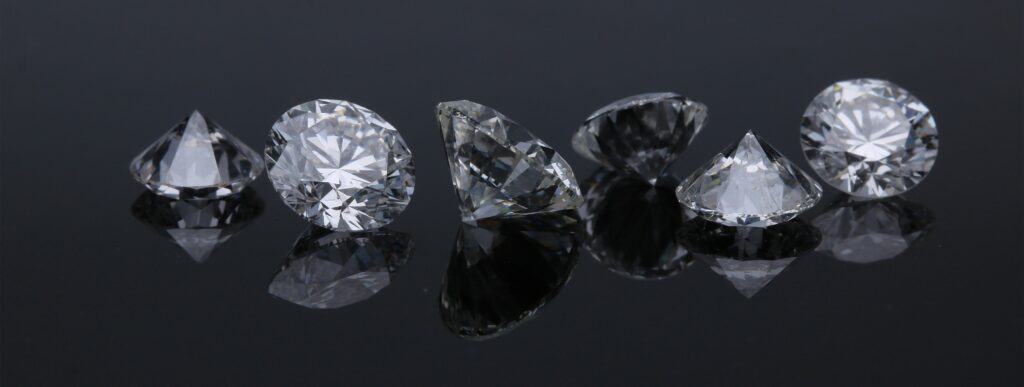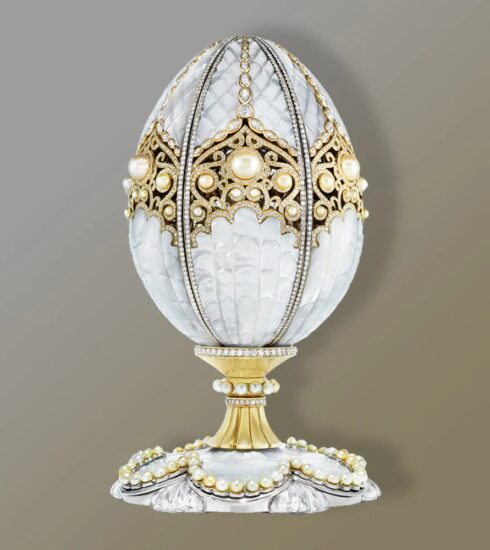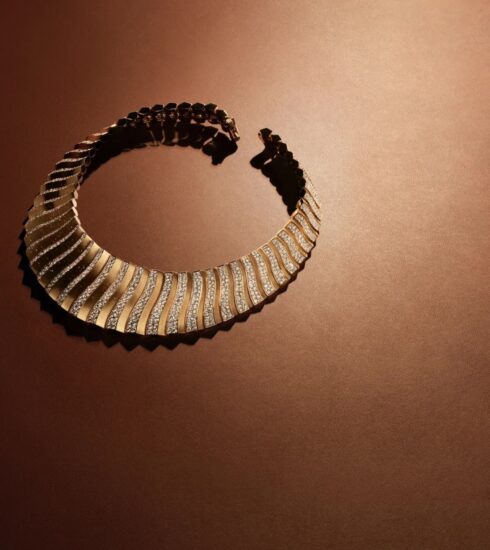Synthetic diamonds: A clarification and an appeal from the German jewellery and watch associations
Synthetic diamonds: A clarification and an appeal from the German jewellery and watch associations
Synthetic diamonds have rapidly conquered the jewelry and watch market. Since then, however, they have also become a bone of contention, a source of confusion, negative marketing, and much frustration. Now, the German Jewelry and Watch Association (BVSU) has published a letter. It is an appeal to the industry and retailers that simultaneously reinforces regulations and creates clarity.
Left: Natural brilliant-cut and uncut diamonds. © Natural Diamond Council
Lab diamond: Challenges posed by the newcomer
Generally, it's always exciting when a new jewelry material comes onto the market. Synthetic diamonds have opened up many new possibilities for both customers and sellers. To the naked eye, they are indistinguishable from a natural diamond. Due to enormous advances in manufacturing, synthetic diamonds have become incredibly affordable—in fact, they now cost only a fraction of a natural diamond.
This is good news for people who have never been able to afford a diamond before and brings new customers to manufacturers or goldsmiths who have decided to work with the material.
But precisely because there's no visual distinction between a synthetic and a natural one without special equipment, the newcomer also opens the door to fraud – or at least misleading consumers. The Federal Association for Jewelry and Watches makes the difference clear:
Diamonds are natural, rare gemstones that possess unique symbolism and whose value derives from their rarity. Synthetic diamonds are industrial reproductions of diamonds.
With such a large price difference between synthetic diamonds and natural diamonds, it must be clearly identifiable which product is involved.
The BVSU explains:
Particularly with regard to maintaining long-term consumer confidence in our industry, the frequently uttered false statements and unnecessary negative marketing claims are a matter of great concern to our members. We appeal to all industry participants to be aware of the dangers these pose and to critically examine their behavior.
To avoid confusion, the Association of Federal Associations of the German Jewellery and Silverware Industry, with the express support of the World Jewellery Federation CIBJO, to all industry participants to follow clearly defined principles when promoting and selling synthetic diamonds.

Negative advertising against natural diamonds
Negative advertising, or negative campaigning, is advertising or public relations that attempts to portray a competitor's product in a negative light in order to increase one's own reputation. In this case, the negative campaigning concerns natural diamonds.
The BVSU explains:
The arguments against (natural) diamonds are usually only assumed, potential consequences and side effects of mining. Land destruction, excessive water use, or water pollution with chemicals are mentioned. Child labor is also repeatedly cited in connection with diamond mining. In the case of a negative portrayal of diamond mining and production processes, such claims should be substantiated. Suppliers of synthetic diamonds repeatedly make these claims without being able to provide any evidence. Advertising to customers with such arguments obliges manufacturers and/or retailers to verify whether the negative arguments against natural diamonds are even valid. Regardless of this, negative advertising harms the entire industry in the medium and long term.
Warning against greenwashing
Synthetic diamonds are often portrayed as sustainable or more sustainable than natural diamonds. The BVSU states that this is false in most cases.
The production of synthetic diamonds relies heavily on raw materials from mining. Without the use of fossil materials from the Earth's mantle, the production of synthetic diamonds is currently not possible. While the production process can be made more sustainable, this is not currently the case for many synthetic diamond manufacturers. Depending on the process used, the production of synthetic diamonds requires graphite, nickel, iron, cobalt, hydrogen (largely produced by burning fossil fuels such as coal), and methane. Negative aspects of mining can therefore also play a significant role for synthetic diamonds. Furthermore, the energy required to produce synthetic diamonds is very high. Not only is their extraction method relevant, but their actual consumption (regardless of the energy source) must also be considered.
Prevent fraud with clear legislation and distinctions
The Association of German Jewelry and Silverware Trade Associations is committed to achieving uniform legal regulations that apply throughout Europe and are directly enforceable.
The principles are intended to clearly distinguish between diamonds and synthetic diamonds, defining them as two distinct products. The goal is to more effectively prevent fraud and misleading consumers and other industry participants.
The appeal to the industry was signed by the following associations:
- Federal Association of Jewelry, Watches, Silverware and Related Industries
- Federal Association of the Gemstone and Diamond Industry
- Federal Association of Jewelers, Jewelry and Watch Shops
- Federal Association of Importers and Exporters of Gemstones and Pearls
- Central Association of German Goldsmiths and Silversmiths
- Central Association for Watches, Jewellery and Time Measurement Technology
- Federal Association of Gablonz Industry
- Precious Metals Association eV Schwäbisch Gmünd
The Federation of Federal Associations of the German Jewelry and Silverware Industry was founded in 1952 with the goal of uniting all German organizations in the jewelry industry, from industry to crafts and trade. It provides a vital platform for all German industry representatives to exchange ideas on issues affecting the entire industry, develop common positions, and represent their interests at the national and international levels. The focus of the association is to represent German interests in the International Jewelry Federation (CIBJO) for the benefit of industry, crafts, and trade.
To prevent greenwashing and consumer deception, the associations intend to consistently enforce applicable EU directives, criminal law, competition law, and, in particular, the provisions preventing greenwashing. The protection of consumers, the affected economy, and the legal system must be ensured, according to the BVSU letter.
Sources: Federal Association of Jewelry and Watches






